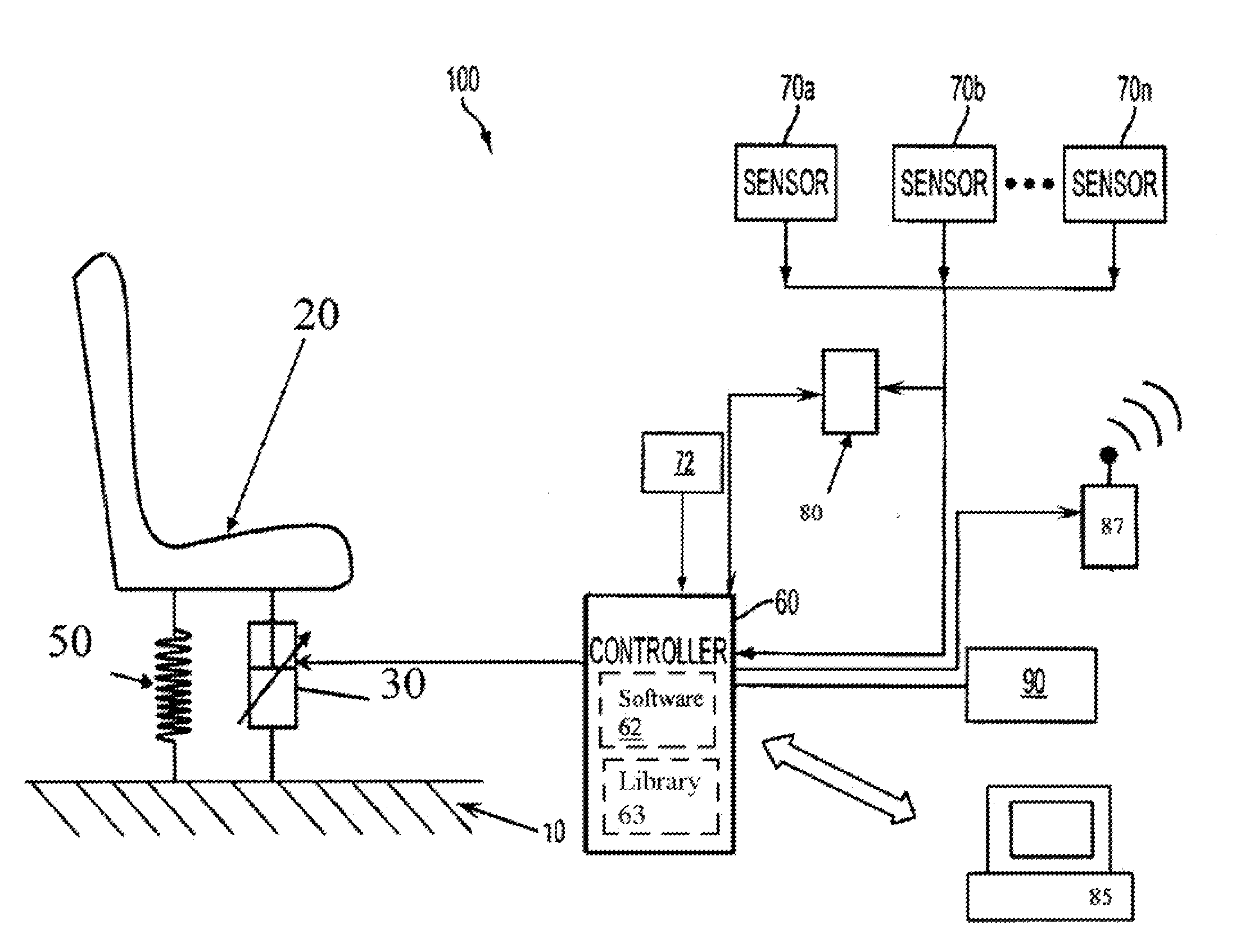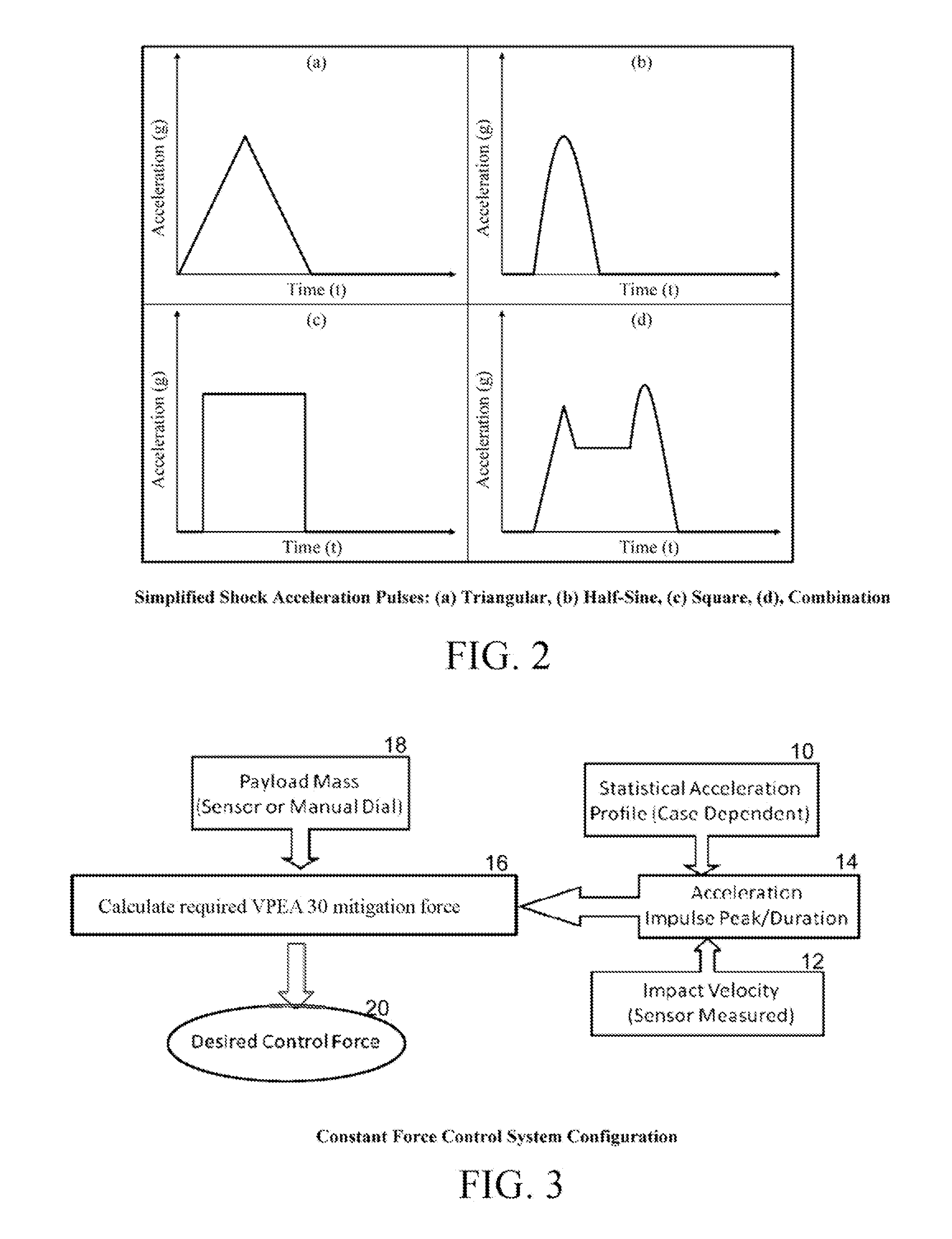Method of determining impact severity and adaptive impact attenuation
a technology of impact severity and impact attenuation, applied in the direction of shock absorbers, pedestrian/occupant safety arrangements, instruments, etc., can solve the problems of low-amplitude shock and vibration, the vehicle cannot automatically adapt its energy absorption as a function of payload weight or as a function of real-time environmental measurements, and the vibration is little to no. , to achieve the effect of minimizing the shock induced load experienced, preventing vehicle occupant injury, and efficiently reducing the shock impuls
- Summary
- Abstract
- Description
- Claims
- Application Information
AI Technical Summary
Benefits of technology
Problems solved by technology
Method used
Image
Examples
Embodiment Construction
[0018]The control system according to the present invention will be herein shown in the context of a shock energy absorption system for a vehicle seat, although the invention is applicable to any payload shock energy minimization application. In the vehicle seat context, the control system includes a plurality of vehicle-mounted components, generally including a controller (processor with memory), one or more sensors (displacement, velocity, or accelerometer) connected to the processor for monitoring impact velocity in real time, and a VPEA operatively connected between the vehicle seat and vehicle frame.
[0019]FIG. 1 is an exemplary illustration of a suitable adaptive energy absorption system 100 for a vehicle seat, according to an embodiment of the invention. The seat 20 may be any type of vehicle seat including, but not limited to, aircraft (e.g., rotorcraft, fixed wing, etc.) seats, land vehicle seats (e.g., seats for heavy-duty military, agricultural, and construction vehicles, ...
PUM
 Login to View More
Login to View More Abstract
Description
Claims
Application Information
 Login to View More
Login to View More - R&D
- Intellectual Property
- Life Sciences
- Materials
- Tech Scout
- Unparalleled Data Quality
- Higher Quality Content
- 60% Fewer Hallucinations
Browse by: Latest US Patents, China's latest patents, Technical Efficacy Thesaurus, Application Domain, Technology Topic, Popular Technical Reports.
© 2025 PatSnap. All rights reserved.Legal|Privacy policy|Modern Slavery Act Transparency Statement|Sitemap|About US| Contact US: help@patsnap.com



